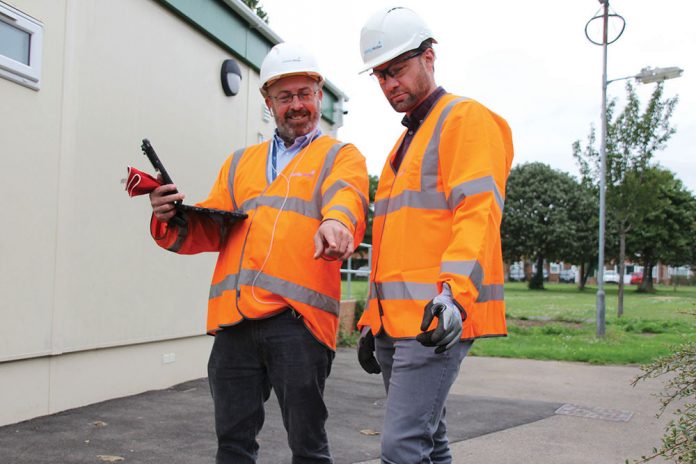Esri builds the world’s most powerful mapping and spatial analytics software. In the process, this global market leader in geographic information systems harnesses the concept of location, location, location to drive both efficiency and digital transformation for its clients
Location intelligence, that confluence of data connecting people with place and contextual information, is at the heart of Esri’s unique ArcGIS software.
And, as Jonathan Swaddle, the company’s Customer Success Manager for client Affinity Water, says, “It has been helping our water industry customers hit some serious targets!
“Now, we are intent on helping them with AMP 7 and rising to meet regulatory demands.”
More than 80% of the UK’s water companies now use Esri’s multidimensional mapping technology in their quest to drive up both efficiency and customer satisfaction levels.
Take Affinity Water, for example. A customer since the days it was Veolia Water, Affinity uses Esri’s ArcGIS JavaScript API to drive what has been christened its Situational Awareness Solution, used 24/7 by its network control team.
It knits together data from legacy systems, customer records, staff/vehicle tracking locations and, crucially, live feeds from almost 4,000 water flow and pressure loggers and 20,000 acoustic loggers, and makes it all visible on one, interactive map.
Jonathan said: “It’s like being able to see everything through a single pane of glass, having all this information on one dashboard, and it is the GIS that makes that happen.”
The result? Affinity Water is now responding faster than ever to water supply interruptions and leaks.
Indeed, when it announced in July it had achieved its five-year leakage reduction target of 15%, it said the winning combination of geospatial analysis and artificial intelligence it was using had also reduced the average time it took to find a leak from around two weeks to just one day.
Affinity now aims to reduce supply interruptions by 17% and leakage by a further 20% by 2025.
Craig Hayes, Esri’s head of Critical National Infrastructure Practice, a remit that includes utilities, telecoms and transport, said: “Everything a water utility typically does is related to location in some way – the route of the network, where a leak might be, where the field crews are and where the customers are. The ‘where, where, where’ is crucial.
“Customer relationship management, asset management, sensor and acoustic logging data, these things are usually logged on different systems, but we can interface with all these different systems and use the location as the common factor.
“That provides a framework the utility company can tap into – a holistic system they can rely on.”
Customers might report problems on a street split between different metered zones, which could point to a problem higher up the network, or cross-referencing might reveal a piece of infrastructure that had already been the subject of several repair missions.
All the time, the water company was narrowing the focus to pinpoint where the problem was.
Craig said: “ArcGIS captures all this information in a spatial format and behind that is all the textual information the workforce needs, perhaps identifying a vulnerable customer, whether a valve is on or off, whether there have been previous problems.
“They can look at the connectivity of the customer to an asset. They know the customer is connected to this specific piece of pipe and valve and this specific substation. So if things are going wrong, where are they going to focus resources?
“Where are my problems? Where do I need to intervene? Where are my best resources to respond as quickly as possible? Answering those questions is critical and that’s where Esri’s ArcGIS software excels.”
In the next issue of Water Industry Journal, Esri will be talking about asset health and tackling the problems posed by void properties.
www.esriuk.com




